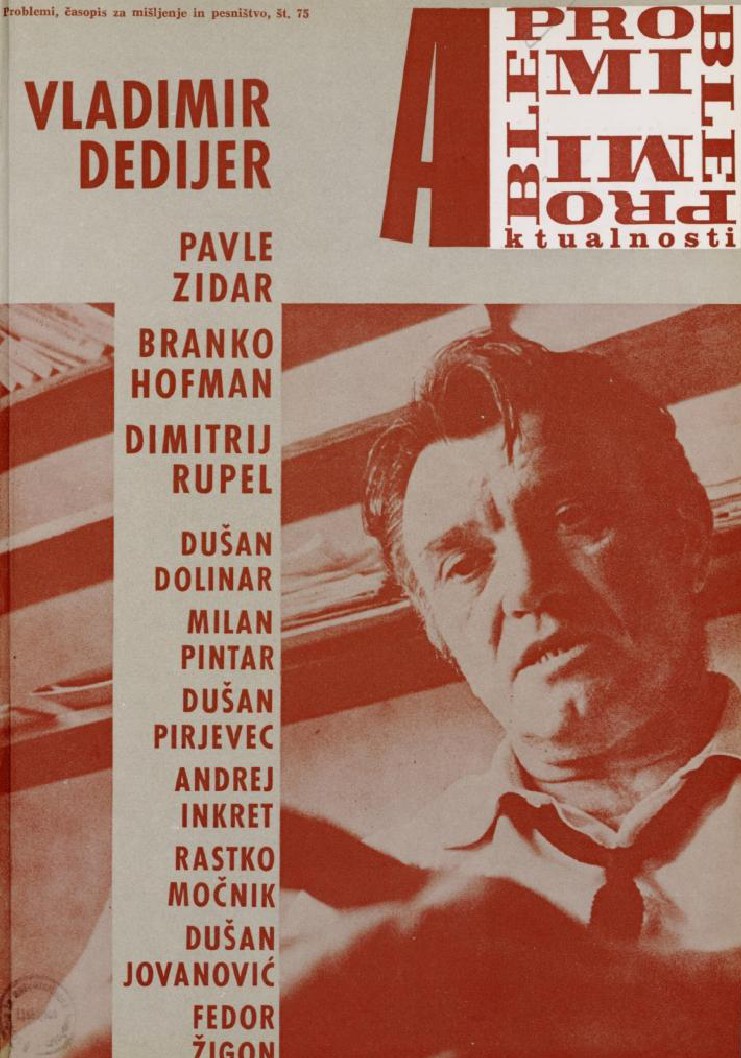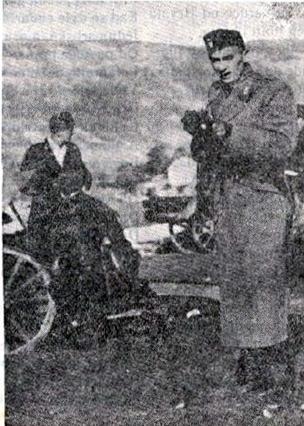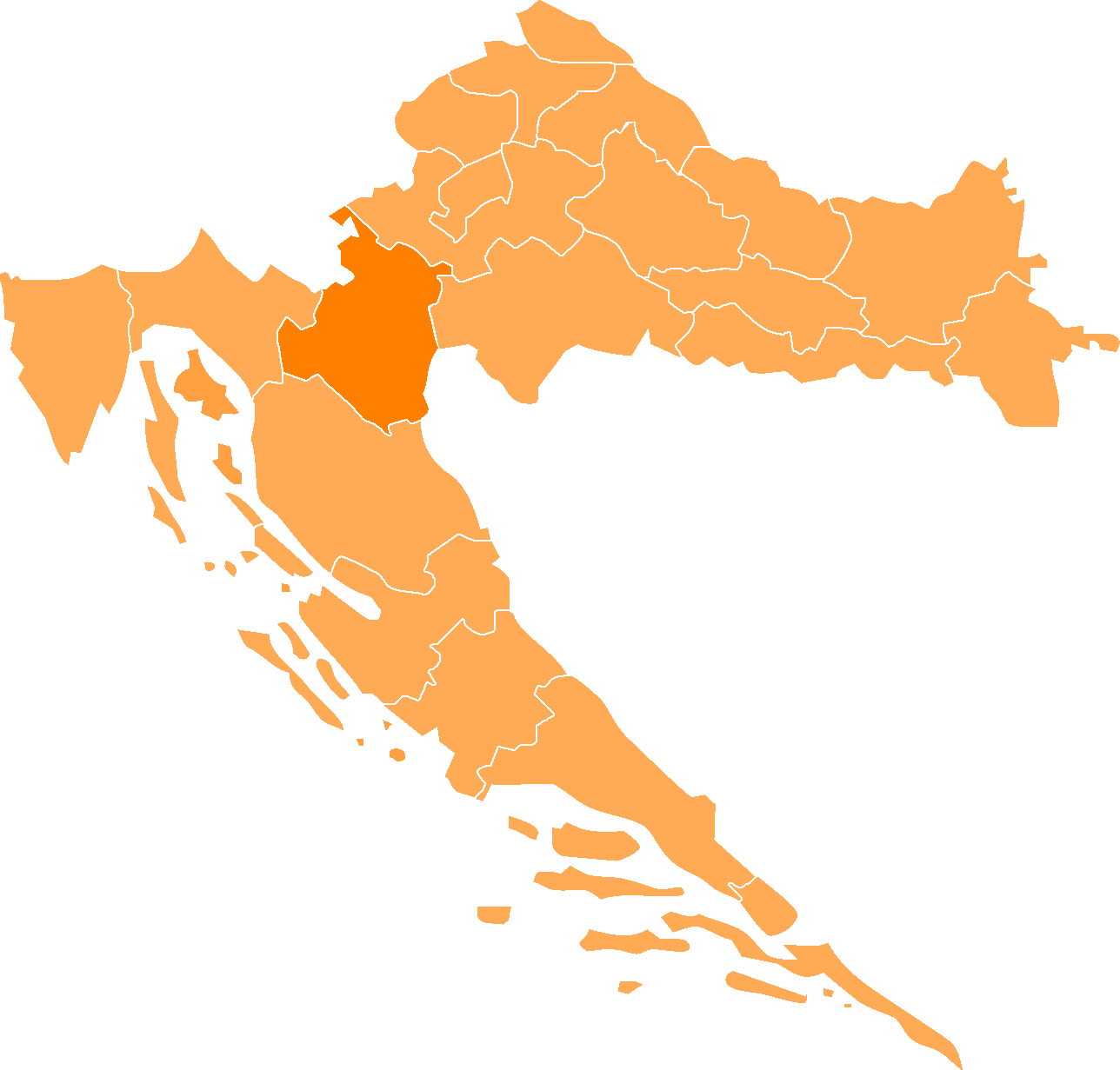|
Mijo Babić
Marijan Mijo Babić (1903–1941), nicknamed Giovanni, was a deputy of the Croatian fascist dictator (poglavnik ( hr, poglavni pobočnik)) Ante Pavelić, and the first commander of all concentration camps in the Independent State of Croatia. He was head of the Third Bureau of the Ustasha Surveillance Service ( hr, Ustaška nadzorna služba—UNS), and was also a member of the Main Ustaše Headquarters, one of the two main deputies of Pavelić. Murder of Toni Šlegel On 22 March 1929, Babić and Matija Soldina murdered Toni Schlegel, the chief editor of ''Novosti'' and president of ''Jugoslovenska štampa'', in Zagreb. At that time, Babić was a chauffeur for the Siemens plant in Zagreb and, according to official reports, he murdered one and wounded another of the policemen who came to arrest him, and managed to escape. Babić fled to Italy where he stayed until Yugoslavias entry into World War II. Italian police considered Babić a very dangerous man who was capable of the wors ... [...More Info...] [...Related Items...] OR: [Wikipedia] [Google] [Baidu] |
Vlado Chernozemski
Vlado Chernozemski (Bulgarian language, Bulgarian: Владо Черноземски; born Velichko Dimitrov Kerin, bg, Величко Димитров Керин; 19 October 1897 – 9 October 1934), was a Bulgarians, Bulgarian revolutionary. Also known as "Vlado the Chauffeur", Chernozemski is considered a hero in Bulgaria today, and in his time, in Croats, Croat dissident circles and in the Macedonian Bulgarians, Macedonian Bulgarian diaspora. His contribution to the idea of Independent Macedonia (IMRO), Independent Macedonia has also won him a similar status in some Macedonians (ethnic group), Macedonian circles today, but the official historiography in North Macedonia regards him as a controversial Bulgarian. Chernozemski began his revolutionary activities in 1922, when he joined the Internal Macedonian Revolutionary Organization (IMRO). Soon after, he became an assassin for the IMRO. He killed two notable Bulgarian politicians, communist Dimo Hadzhidimov, and IMRO member N ... [...More Info...] [...Related Items...] OR: [Wikipedia] [Google] [Baidu] |
Danica Concentration Camp
Danica was the first concentration and extermination camp established in the Independent State of Croatia during World War II. It was established in Koprivnica (modern-day Croatia) on 15 or 20 April 1941 in the deserted building of former fertilizer factory "Danica". Mijo Babić participated in preparations for the establishment of Danica concentration camp The first individual inmates were brought to Danica on 18 April 1941 while first groups arrived at the end of April 1941. The Jews from Zagreb were transported to Danica and Jadovno early in May 1941. Those transported to Danica were all killed by July 1941, while those transported to Jadovno were all killed by August 1941. Already in June 1941 there were 2,000 inmates in Danica, most of them being Serbs followed by Croat communists, Jews and Romani people. The number of inmates reached 5,000 including 500 Jews. Four hundred Romani Romani may refer to: Ethnicities * Romani people, an ethnic group of Northern Indian origin, ... [...More Info...] [...Related Items...] OR: [Wikipedia] [Google] [Baidu] |
Vlado Šegrt
Vlado Šegrt (18 December 1907 – 1 August 1991) was a Yugoslav participant in the National Liberation Struggle and a socio-political worker in the Socialist Republics of Bosnia and Herzegovina and Yugoslavia. He was a reserve Major General and national hero of Yugoslavia. From September 1948 to March 1953 he was the President of the Presidium of the National Assembly of the People's Republic of Bosnia and Herzegovina. Early life and education Šegrt was born on 18 December 1907, in the village of Aranđelovo, near Trebinje. After finishing primary school in the village of Lastva, he worked as a framer. As a seasonal worker, his interactions brought him into contact with the labor movement. Political activism Šegrt became a member of the Union of Communist Youth of Yugoslavia (Communist Youth) in 1928, and the Communist Party of Yugoslavia (CPY) in 1931. The Party included Sava Kovačević, who had a great impact on it. Vlado (Vladimir) was a member of party leadership in Grahov ... [...More Info...] [...Related Items...] OR: [Wikipedia] [Google] [Baidu] |
Vladimir Dedijer
Vladimir Dedijer ( sr-Cyrl, Владимир Дедијер; 4 February 1914 – 30 November 1990) was a Yugoslav partisan fighter during World War II who became known as a politician, human rights activist, and historian. In the early postwar years, he represented Yugoslavia at the United Nations and was a senior government official. Later, after being at cross purposes with the government, he concentrated on his academic career as a historian. He taught at the University of Belgrade and also served as a visiting professor at several universities in the United States and Europe. He participated in the Bertrand Russell International War Crimes Tribunal in 1967, reviewing United States forces activities in Vietnam, and in later tribunals. Origins and family Vladimir Dedijer was born to a Serbian family in Belgrade, in the Kingdom of Serbia, which later was absorbed into Yugoslavia. His family originated from Čepelica, Bileća in Bosnia and Herzegovina and were Orthodox Christian ... [...More Info...] [...Related Items...] OR: [Wikipedia] [Google] [Baidu] |
Čapljina
Čapljina ( sr-cyrl, Чапљина, ) is a city located in Herzegovina-Neretva Canton of the Federation of Bosnia and Herzegovina, an entity of Bosnia and Herzegovina. It is located on the border with Croatia a mere from the Adriatic Sea. The river Neretva flows through the city and flows into the Adriatic just over the border. The town's landmark is a statue of King Tomislav. The Church of Saint Francis of Assisi is also a prominent facet of the city. The city coat of arms contains the Croatian checkerboard, the nearby tower in Počitelj, and Saint Francis of Assisi. The city has a rich archaeological history and untouched wilderness and is starting to develop agricultural tourism. It is also home to Hutovo Blato Park, which contains one of the most diverse bird populations in all Europe. The Croatian town of Metković is located just over the border and there are significant commercial and other links between the two towns new Čapljina International Speedway. History ... [...More Info...] [...Related Items...] OR: [Wikipedia] [Google] [Baidu] |
Andrija Artuković
Andrija Artuković (19 November 1899 – 16 January 1988) was a Croatian lawyer, politician, and senior member of the ultranationalist and fascist Ustasha movement, who served as the Minister of Internal Affairs and Minister of Justice in the Government of the Independent State of Croatia (NDH) during World War II in Yugoslavia. He signed into law a number of racial laws against Serbs, Jews, and Roma, and was responsible for a string of concentration camps in which over 100,000 civilians were tortured and murdered. He escaped to the United States after the war, where he lived until extradited to Yugoslavia in 1986. He was tried and found guilty of a number of mass killings in the NDH, and was sentenced to death, but the sentence was not carried out due to his age and health. He died in custody in 1988. Early life and career Andrija Artuković was born on 19 November 1899, in Klobuk, near Ljubuški in Austro-Hungarian-occupied Herzegovina to Marijan and Ruža (née Rašić) ... [...More Info...] [...Related Items...] OR: [Wikipedia] [Google] [Baidu] |
Jure Francetić
Jure Francetić (3 July 1912 – 27/28 December 1942) was a Croatian Ustaša Commissioner for the Bosnia and Herzegovina regions of the Independent State of Croatia (NDH) during World War II, and commander of the 1st Ustaše Regiment of the Ustaše Militia, later known as the Black Legion. In both roles he was responsible for the massacre of Bosnian Serbs and Jews. A member of Ante Pavelić's inner circle, he was considered by many Ustaše as a possible successor to Pavelić as Poglavnik (leader) of the NDH. He died of wounds inflicted when he was captured by Partisans near Slunj in the Kordun region when his aircraft crash-landed there in late December 1942. Early life prior to formation of NDH Francetić was born in Otočac in the mountainous Lika region of modern-day central Croatia on 3 July 1912. After high school where he was influenced by nationalist teachers, he went to study law at the University of Zagreb, where he joined the Ustaša movement and abandoned his s ... [...More Info...] [...Related Items...] OR: [Wikipedia] [Google] [Baidu] |
Ivo Herenčić
Ivan "Ivo" Herenčić (28 February 1910 – 8 December 1978) was a general in the armed forces of the Independent State of Croatia (, NDH), a fascist puppet state. In 1941, he commanded a battalion of Ustaše Militia that committed many war crimes and atrocities on civilians in the NDH. Born in Bjelovar in Austria-Hungary, he completed his secondary and tertiary education in Zagreb and Sarajevo in what was by then the Kingdom of Yugoslavia. In 1933, he left Yugoslavia to join the fascist and ultranationalist Croatian Ustaše movement in Italy. Late that year, Herenčić participated in an unsuccessful assassination attempt on the King of Yugoslavia, Alexander. Herenčić returned to his homeland when the NDH was established following the Axis invasion of Yugoslavia in April 1941. He was sent to the Herzegovina region where he formed and commanded the Mostar Battalion which committed war crimes in Bosnia and Herzegovina. Herenčić also served in the surveillance departments ... [...More Info...] [...Related Items...] OR: [Wikipedia] [Google] [Baidu] |
Croats
The Croats (; hr, Hrvati ) are a South Slavic ethnic group who share a common Croatian ancestry, culture, history and language. They are also a recognized minority in a number of neighboring countries, namely Austria, the Czech Republic, Germany, Hungary, Italy, Montenegro, Romania, Serbia, Slovakia and Slovenia. Due to political, social and economic reasons, many Croats migrated to North and South America as well as New Zealand and later Australia, establishing a diaspora in the aftermath of World War II, with grassroots assistance from earlier communities and the Roman Catholic Church. In Croatia (the nation state), 3.9 million people identify themselves as Croats, and constitute about 90.4% of the population. Another 553,000 live in Bosnia and Herzegovina, where they are one of the three constituent ethnic groups, predominantly living in Western Herzegovina, Central Bosnia and Bosnian Posavina. The minority in Serbia number about 70,000, mostly in Vojvodina. The ... [...More Info...] [...Related Items...] OR: [Wikipedia] [Google] [Baidu] |
Kordun
The Kordun () region is a part of central Croatia from the bottom of the Petrova Gora (Peter's mountain) mountain range, which extends along the rivers Korana and Slunjčica, and forms part of the border region to Bosnia and Herzegovina. Within Croatia, Kordun is bordered by the Lika region to the south and by Banovina or Banija to the east. Most of Kordun with its centre Slunj belongs to Karlovac County (Slunj, Cetingrad, Krnjak, Rakovica and Vojnić). Vrginmost belongs to Sisak-Moslavina County. In former times, this region belonged to the Habsburg Military Frontier towards the Ottoman Empire. Following the Croatian War of Independence, a number of towns and municipalities in the region were designated Areas of Special State Concern. The area has rich wood resources. Today, the economic situation is slowly improving, but there is still a large tendency of emigration from the region to larger cities. A typical phenomenon of this region is the porous composition of the karst ... [...More Info...] [...Related Items...] OR: [Wikipedia] [Google] [Baidu] |
Blagaj Massacre
The Blagaj massacre was the mass killing of around 400 Serb civilians by the Croatian nationalist Ustaše movement on 9 May 1941, during World War II. The massacre occurred shortly after the German-led Axis invasion of Yugoslavia and the establishment of the Ustaše-led Axis puppet state known as the Independent State of Croatia (NDH). It was the second act of mass murder committed by the Ustaše upon coming to power and was part of a wider campaign of genocide against Serbs in the NDH that would last until the end of the war. The victims were drawn from the village of Veljun and its surroundings, ostensibly for their involvement in the robbery and murder of a local Croat Catholic miller, Joso Mravunac, and his family. The Ustaše claimed that the murders were ethnically motivated and signalled the start of a regional Serb uprising. Following their arrests, the prisoners were detained in a Blagaj school, where many were beaten and tortured. The Ustaše intended to organize a mass ... [...More Info...] [...Related Items...] OR: [Wikipedia] [Google] [Baidu] |
Travnik
Travnik is a town and a municipality in Bosnia and Herzegovina. It is the administrative center of Central Bosnia Canton of the Federation of Bosnia and Herzegovina. It is situated in central Bosnia and Herzegovina, west of Sarajevo. As of 2013, the town had a population of 15,344 inhabitants, while the municipality had 53,482 inhabitants. Historically, it was the capital city of the governors of Bosnia from 1699 to 1850, and has a cultural heritage dating from that period. Geography Travnik is located near the geographic center of Bosnia and Herzegovina at . The river Lašva passes through the town, flowing from west to east before joining the Bosna. Travnik itself is built in the large Lašva valley, which connects the Bosna river valley in the east with the Vrbas river valley in the west. Travnik is found above sea level. Its most distinguishing geographic feature are its mountains, Vilenica and Vlašić. Vlašić, named after the Vlachs, is one of the tallest mounta ... [...More Info...] [...Related Items...] OR: [Wikipedia] [Google] [Baidu] |



.png)


